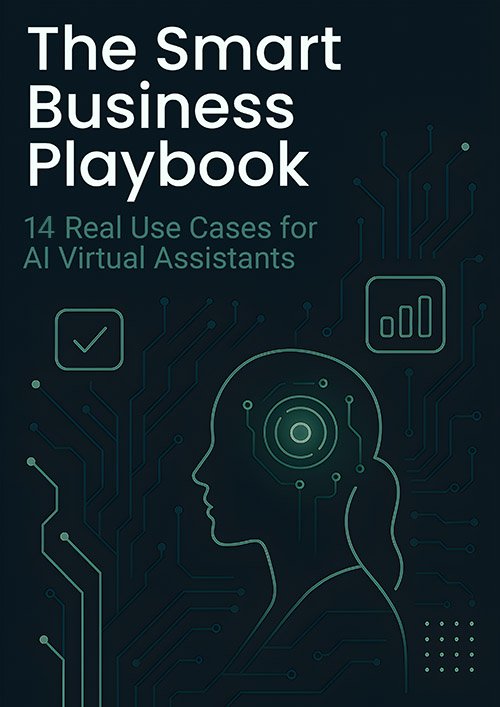To effectively onboard new hires, implement these five proven feedback strategies: Schedule regular check-in meetings after week one, month one, and quarter one; create digital feedback channels using platforms like SurveyMonkey; pair newcomers with experienced buddy mentors; track key performance milestones to measure progress; and establish two-way communication platforms for continuous dialogue. These research-backed approaches can double engagement rates and boost retention by 30% – discover how to maximize each strategy's impact.
Key Takeaways
- Schedule regular check-in meetings after week one, first month, and quarter to assess progress and address concerns promptly.
- Implement digital feedback platforms like surveys and chatbots to capture real-time insights and track employee satisfaction.
- Establish a peer buddy system that pairs new hires with experienced employees to provide guidance and support.
- Set clear performance milestones and conduct assessments to measure progress and identify areas needing improvement.
- Create two-way communication channels with anonymous feedback options to encourage open dialogue between employees and management.
Establish Regular Check-in Meetings

While onboarding sets the foundation for a new hire's success, regular check-in meetings serve as essential touchpoints to guarantee their smooth shift into the organization.
You'll want to schedule these meetings strategically after the first week, month, and quarter to assess progress and address concerns promptly.
Research demonstrates that implementing regular check-ins can double employee engagement rates throughout the employee onboarding process.
During these sessions, you'll establish clear communication channels that encourage new hires to share their experiences and challenges openly.
Use these meetings to align individual goals with organizational objectives and gather valuable feedback for continuous improvement. Additionally, incorporating performance management software facilitates ongoing feedback and supports new hires' integration into the team.
Create Digital Feedback Channels
Since modern workplaces increasingly rely on digital communication, establishing robust digital feedback channels is essential for capturing new hire insights effectively.
You'll want to implement real-time feedback tools and platforms that streamline collection of onboarding feedback while ensuring anonymity and convenience for your new employees.
To maximize the effectiveness of your digital feedback channels:
Smart digital feedback channels create pathways for success, enabling organizations to adapt and improve their onboarding processes continuously.
- Deploy user-friendly platforms like SurveyMonkey or Google Forms to gather structured feedback regularly.
- Implement chatbots or mobile apps that enable instant communication during the onboarding process.
- Utilize analytics tools to track employee satisfaction and retention rates, helping you refine your onboarding strategies. Additionally, ensuring clear communication of expectations enhances the onboarding experience, leading to improved performance within the first 90 days.
Implement Peer Support Systems

Building on your digital feedback infrastructure, a well-structured peer support system can amplify your onboarding success. You'll find that pairing new hires with experienced buddies can boost productivity by 56%, while eight or more buddy interactions can lead to a remarkable 97% improvement in performance.
| Benefit | Impact | Action Item |
|---|---|---|
| Productivity | 56% increase | Schedule weekly buddy meetings |
| Job Satisfaction | Higher retention rates | Create structured interaction plans |
| Learning Curve | Faster adaptation | Develop buddy training modules |
To maximize your peer support system's effectiveness, guarantee regular communication between buddies and new hires. This collaborative environment helps address immediate concerns while fostering a sense of belonging. By implementing these feedback strategies throughout the onboarding process, you'll create an employee experience that drives engagement and strengthens team relationships. Additionally, effective mentorship programs play a crucial role in enhancing job satisfaction and employee performance.
Track Performance Milestones
Three key milestones can transform your onboarding process into a measurable journey of success. By tracking performance milestones, you'll boost employee retention by 30% while ensuring new hires reach their full potential quickly.
Monitoring performance helps identify bottlenecks and enables swift interventions when needed.
Regular performance monitoring acts as an early warning system, allowing managers to spot and resolve issues before they impact productivity.
To maximize your feedback strategies and enhance engagement, implement these essential steps:
- Set specific performance metrics that align with organizational goals
- Conduct regular milestone assessments to measure time-to-productivity
- Deploy post-onboarding surveys to gather insights on the employee experience
This structured approach to tracking progress won't just improve job satisfaction – it'll create a clear pathway for success. Additionally, aligning your performance metrics with company policies can further ensure that new hires understand expectations and their role within the organization.
When you consistently monitor milestones, you're investing in both your new hires' development and your organization's future growth.
Build Two-Way Communication Platforms

While traditional onboarding focuses on one-way information delivery, effective two-way communication platforms transform new hires from passive recipients into active participants.
By establishing dedicated chat channels and forums, you'll create spaces where employees can voice concerns and share feedback throughout their onboarding experience.
Implement regular check-ins through these platforms to double employee engagement rates and demonstrate that you value their input.
Include anonymous feedback options to encourage candid responses, as most employees communicate more openly when their identity is protected.
Deploy collaborative tools like surveys and polls to measure onboarding satisfaction and drive real-time improvement.
Train your managers to actively respond to feedback, building trust and strengthening relationships.
This thorough approach to two-way communication can boost employee retention by up to 30%. Additionally, utilizing an AI onboarding checklist can streamline the process and ensure that new hires have a smooth transition into their roles.
Frequently Asked Questions
What Are the 5 C's of Effective Onboarding?
You'll master onboarding through the 5 C's: compliance for paperwork, clarification for role understanding, culture for integration, connection for engagement, and confidence through continuous training and mentorship.
How to Give Feedback on Onboarding Process?
Share your experience through onboarding surveys, feedback sessions, and new hire interviews. Provide manager insights, training evaluations, and adjustment recommendations while aligning goals with peer reviews for continuous improvement.
What Are the 4 Pillars of Onboarding?
The four pillars of your onboarding experience include preparation with resource accessibility, cultural integration through team collaboration, role-specific training programs with clear performance metrics, and ongoing mentor support with feedback loops.
What Are the 3 Most Important Elements of Successful Onboarding?
Like building a strong foundation, your onboarding success hinges on clear role clarity with defined performance metrics, effective cultural integration through mentorship programs, and consistent feedback loops ensuring employee engagement.


